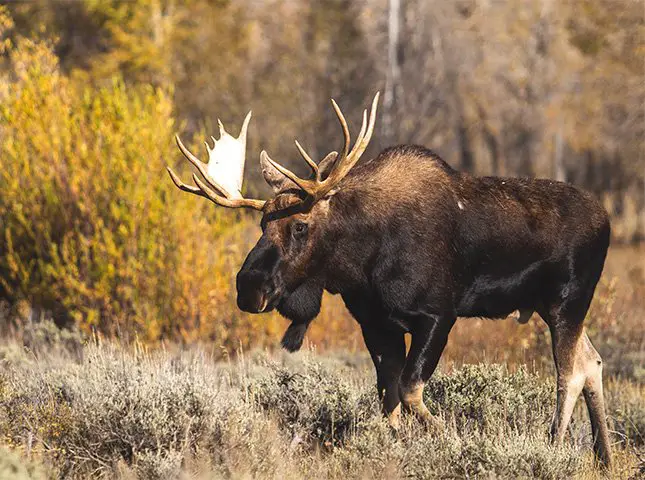The moose, often considered a gentle giant of the northern forests, is not only impressive in size but also in speed. Despite their massive stature, moose are surprisingly agile and can reach impressive speeds when they need to. But how fast can a moose run? Let’s dive into the world of moose and uncover the facts behind their surprising agility.
Table of Contents
Key Takeaways:
- Moose are capable of reaching speeds up to 35 mph.
- Their long legs and powerful build allow them to move quickly, even in challenging terrains.
- Moose speed can vary based on age, health, and environmental factors.
The Speed of a Moose
Moose in Open Terrain
In open terrains, such as meadows or clearings, a healthy adult moose can reach speeds of up to 35 mph. This speed is especially impressive considering their size, which can range from 800 to 1,500 pounds.
Moose in Dense Forests
While moose are fast in open areas, their speed can be slightly reduced in dense forests due to obstacles. However, their long legs and agile bodies allow them to navigate through thickets and underbrush with relative ease.
Moose in Snowy Conditions
Snow can be a hindrance to many animals, but not the moose. Their long legs act as natural snowshoes, allowing them to move quickly even in deep snow. While their speed might be reduced compared to open terrain, they can still move faster than many predators in snowy conditions.
Factors Influencing Moose Speed
Age and Health
Younger moose, being more agile and energetic, can often run faster than older individuals. Similarly, a healthy moose will naturally be faster than one that is sick or injured.
Terrain and Environment
As mentioned earlier, the type of terrain can influence a moose’s speed. Open terrains offer the least resistance, while dense forests or swamps can slow them down. However, even in challenging environments, moose are adept at maintaining a steady pace.
Predation and Threats
When faced with threats, such as predators or humans, moose can tap into their reserves of speed and stamina. The presence of predators like wolves or bears can trigger a flight response, pushing the moose to run at top speeds.
The Anatomy Behind a Moose’s Speed
Muscular Build
Moose have a muscular build, especially in their hindquarters, which provides the power needed for rapid acceleration. This muscle mass is essential for propelling their large bodies at high speeds.
Long Legs
The long legs of a moose are not just for wading through deep snow or water. They also give the moose a longer stride, allowing them to cover more ground with each step.
Broad Hooves
Moose have broad, split hooves that provide traction on various terrains, from muddy swamps to snowy forests. These hooves act like natural snowshoes in winter and prevent them from sinking into soft ground.
By understanding the anatomy and adaptations of the moose, we can appreciate their capabilities and the evolutionary factors that have shaped them. These majestic giants of the northern forests are a testament to nature’s ability to equip its creatures with the tools they need to survive and thrive.
Frequently Asked Questions
1. How does the speed of a moose compare to other large mammals?
While moose are fast for their size, they are not the fastest large mammals. For instance, horses can reach speeds of up to 55 mph, and even the massive African elephant can run up to 25 mph. However, considering the moose’s habitat and body structure, their speed is impressive.
2. Are moose good swimmers?
Yes, moose are excellent swimmers. They can swim at speeds of up to 6 mph and can cover long distances in water. Their long legs and broad hooves make them adept at swimming, and they often venture into lakes and rivers in search of aquatic plants.
3. Why do moose need to run fast?
Speed is a survival mechanism for moose. In the wild, they face threats from predators like wolves, bears, and mountain lions. Being able to run fast allows them to escape these threats. Additionally, speed helps them cover large territories in search of food, especially in winter when food sources are scarce.
4. How long can a moose maintain its top speed?
While moose can reach speeds of up to 35 mph, they cannot maintain this speed for extended periods. They are built for short bursts of speed to escape immediate threats. After a sprint, they would need to rest and recover.
5. Do moose have any natural predators?
Yes, moose have several natural predators, including wolves, bears, and mountain lions. While their size offers some protection, young or sick moose can fall prey to these predators. Their speed and agility are crucial in evading such threats.


